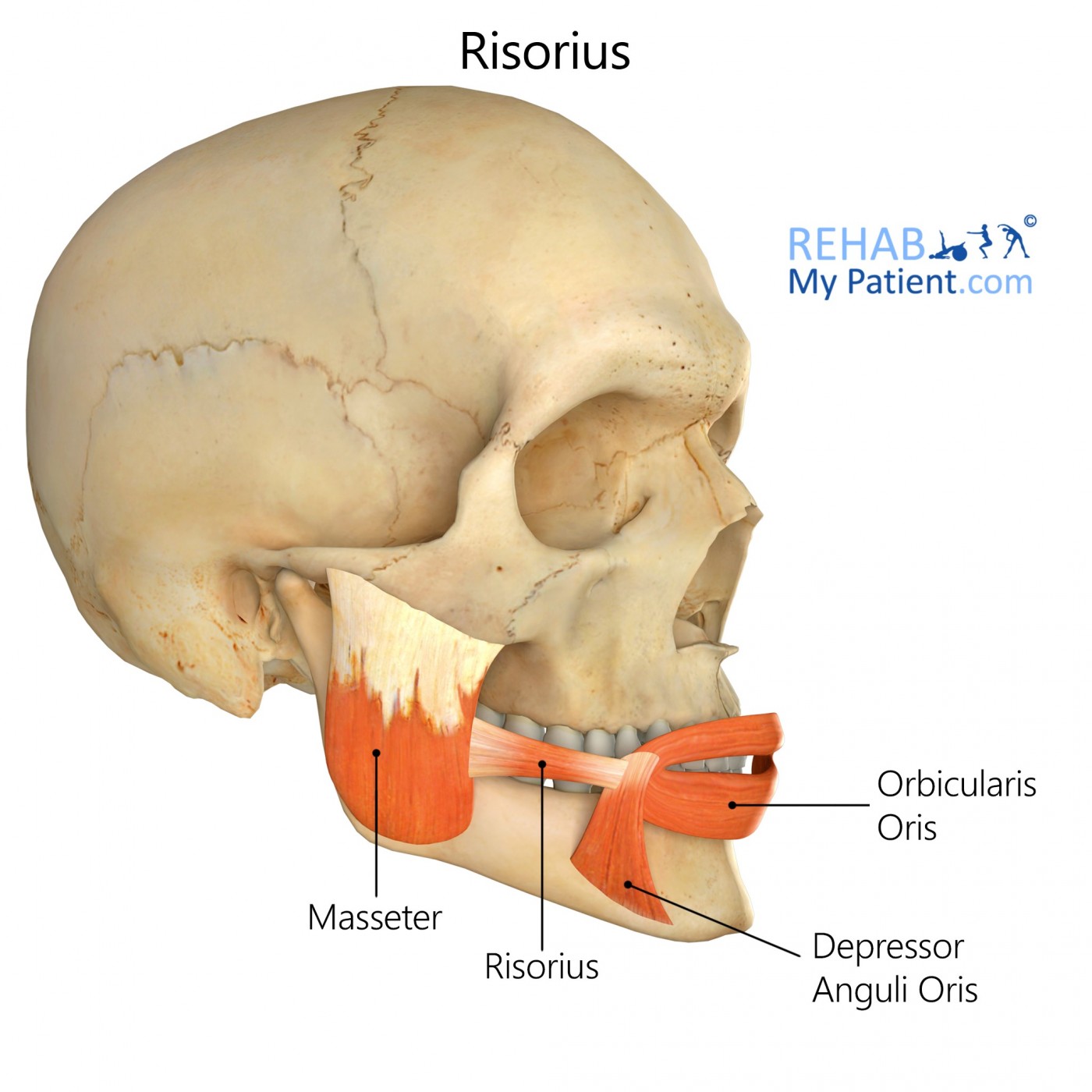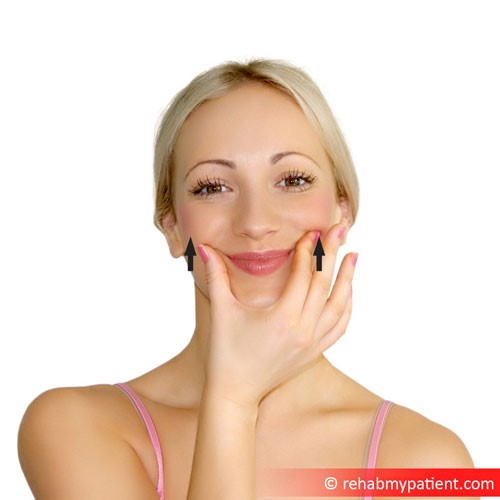
General information
The Risorius is a muscle that controls facial expressions arising within the fascia that is over the parotid gland. It passes horizontally forward, inserting onto the skin at an angle of the mouth and is superficial to the platysma. This narrow bundle of fibres, which is widest at the base, varies in form and size.
Literal meaning
Laughing muscle.
Interesting information
The Risorius muscle is one of the large muscles in the face. It is located mainly around the mouth and controls the ability to create a facial expression. It begins around the parotid gland but makes its way all the way around to the platysma muscle. The platysma muscle is found within the neck and chest. The Risorius muscle continues until the skin from the mouth ends. While moving outward and upward, the muscle works along with the other muscles to create facial movement that moves the face in a cohesive unit. The motion of the muscles will pull the lip and face back to create a number of different facial expressions. Frowning and smiling are two of the main expressions created by using these muscles together.
Injuries to this area are not common. Most attention to the Risorius comes in the form of cosmetic surgical procedures and facial exercises to alleviate sagging or drooping of the immediate area. These are generally aesthetic issues.
Origin
Normally attaches to the parotid and masseteric fascia, zygomatic arch and blended with fibres of the platysma.
Insertion
Blended with various muscle fibres around the modiolus angle for the mouth.
Function
Pulls the mouth angles laterally and superiorly.
Nerve supply
Facial nerve.
Blood supply
Small anastomotic branches of the facial artery.
Transverse facial artery.

Relevant research
It has been observed that the injection of botulinum neurotoxin Type A (BTX) into the masseter muscle frequently causes a change in facial expression. This study aimed to clarify the location and boundaries of the risorius muscle, charting its topological relationship with surrounding muscles and structures. It was found that the medial part of the masseter muscle was most likely to be partly covered by the risorius. This means that the middle part of the masseter is a hazard zone where injected BTX may potentially cause unnatural facial expressions in patients.
Bae JH, Choi DY, Lee JG, Seo KK, Tansatit T, Kim HJ. The risorius muscle: anatomic considerations with reference to botulinum neurotoxin injection for masseteric hypertrophy. Dermatol Surg. 2014;40(12):1334?1339. doi:10.1097/DSS.0000000000000223
Risorius exercises

Corner mouth pull
Place an index finger on either corner of the mouth while the lips are fully closed. Using the cheek muscles, stretch the mouth into a smile without parting the lips open. Use the index fingers to press back gently, encouraging the stretch. Hold for a count of six. Relax and repeat for five repetitions.
Mouth corners
Place each thumb inside either side of the upper lip closest to the corners of the mouth. Continue to grab the area by allowing the index finger to rest on the outside of the mouth in alignment with the thumb. Gently pull in a downward motion slightly with the fingers and begin to smile while feeling the resistance from the fingers. Hold for a count of ten, then release the smile. Repeat this 20 times a day.
Sign Up
Sign up for your free trial now!
Get started with Rehab My Patient today and revolutionize your exercise prescription process for effective rehabilitation.
Start Your 14-Day Free Trial